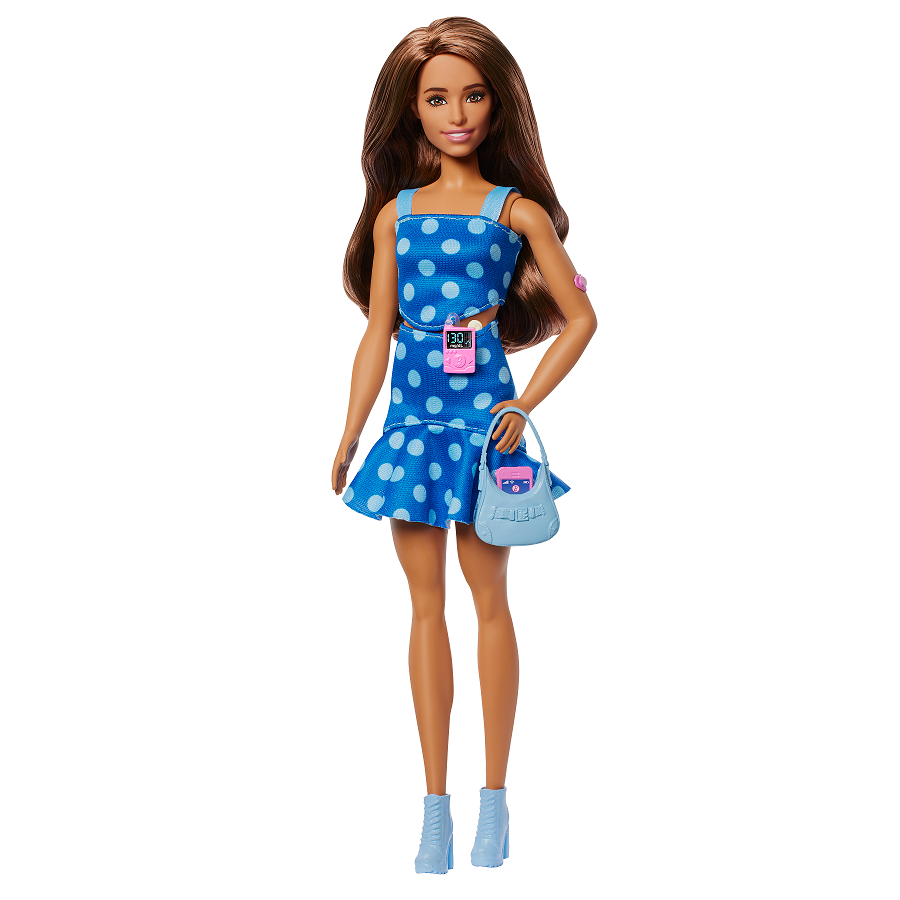Of the many brands to align with times of progression, Barbie has always stayed ahead of the curve. Over the course of the last decade, the company has launched more and more dolls that deepen their range of inclusivity. The dolls have been incorporating more diverse body types and potential disabilities.
So, though it should come as no surprise, it’s still worth celebrating their most recent venture, the Type 1 Diabetes Barbie. Complete with an insulin pimp and glucose monitor, this Barbie is opening doors for girls to feel worthy of celebrating who they are.
Type 1 Diabetes Barbie Doll
On July 8th, Mattel announced that it would be debuting its first-ever Type 1 Diabetes Barbie. Not only does she come equipped with a continuous glucose monitor (the small devices those with type 1 diabetes wear to measure their blood-sugar levels) and an insulin pump (a wearable device that allows for automated insulin dosing), but she’s also got a gorgeous outfit and accessories. Her blue polka dot dress not only nods to the global symbols that represent diabetes awareness, but also shows that living with type 1 diabetes doesn’t take away from being fierce and fabulous. Besides her medicinal tools, type 1 diabetes Barbie is just like any other Barbie. She is complete with a knack for fashion and beauty.
The launch of a Type 1 Diabetes Barbie is more than just medical representation. It’s an active part of Mattel’s long-term strategy to reflect all children’s lived experiences in their toys.
“Introducing a Barbie doll with type 1 diabetes marks an important step in our commitment to inclusivity and representation,” said Krista Berger, Senior Vice President of Barbie and Global Head of Dolls. “Barbie helps shape children’s early perceptions of the world, and by reflecting medical conditions like type 1 diabetes, we ensure more kids can see themselves in the stories they imagine and the dolls they love.”
According to the CDC, it’s estimated that 2 million people in the US have type 1 diabetes. This number includes about 304,000 children and adolescents. As a young girl, it can be incredibly isolating not to see a doll that embodies you and your life accurately. Living with dependence on an insulin pump can be shameful when that’s not mirrored back to you societally. The launch of Type 1 Diabetes Barbie rectifies that gap in representation.
The Importance of Representation
Type 1 Diabetes Barbie now joins an impressive and important lineup of Barbies. Some Barbies include a Blind Barbie doll, a Barbie doll with Down Syndrome, and a Barbie doll with Hearing Aids. Since 2020, the Fashionistas line has become the flagship for inclusivity. There have been over 35 added skin tones, 94 hairstyles, and 9 body types. This is incredibly beneficial to any young Black girls who play with Barbies as well. The first true Black Barbie with Afrocentric features came in 1980, developed by Kitty Black Perkins by following community-informed design processes. Things have thankfully only gotten more inclusive since then.
The hope is that only more brands that impact children directly will rise up to be mindful of accurately representing a diverse and beautifully complex demographic.
